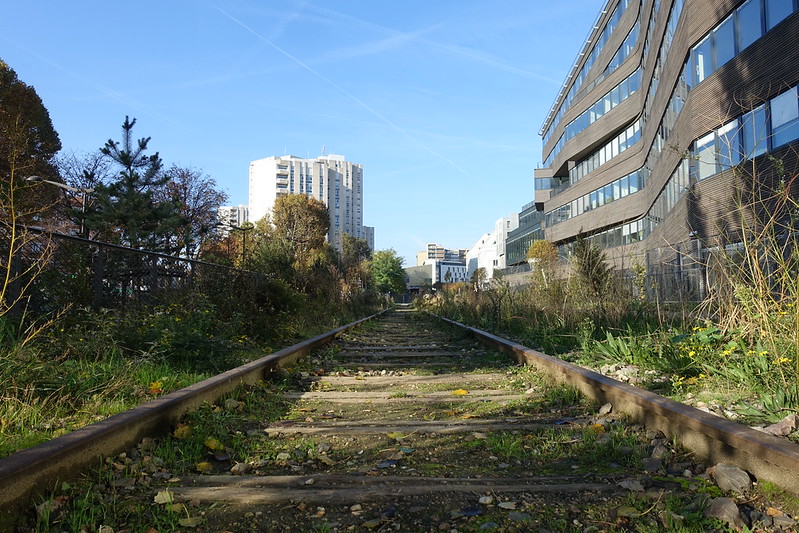This week marks the first anniversary of Fabric of Paris. Indeed, I published my first post 52 weeks ago today.
I created Fabric of Paris as an outlet for my love for the city I live in, a love which I hope bleeds through into my writing. Working on this blog has been a lot of fun, and I’ve learned a lot: about the origin stories of some of the city’s parks; about some of the history behind the layout and names of its streets; about Paris’s street furniture; and much more.

I hope that on these pages I’ve managed to share my enthusiasm for this wonderful city and its rich history and fascinating infrastructure. For the first few months I managed to put out a new article every week, but that went haywire around the time of the first lockdown. I’ve got so many ideas that I hope to try to increase the output once again, though I won’t promise weekly posts.
If you are a regular reader – or if you just discovered Fabric of Paris but you like what you see – please let me know. I’m still relatively new to writing regularly for an audience, and every time someone gets in touch to say they’ve read and appreciated something I’ve written it feels absolutely wonderful. And please don’t hesitate to share posts that you think might interest those around you!
The year’s best articles
The year’s most popular posts were about the incredible stories behind transport projects which never saw the light of day. Of these, three in particular stand out: Aramis, an attempt at passenger rapid transit that fell victim to its inherently contradictory aims; Aérotrain, a hovertrain concept that nearly ended up transporting commuters to La Défense but ultimately failed to outshine the conventional railway; and SK, the tale of the local authorities pouring money into an untested new technology to serve an unbuilt business park. I really enjoyed researching for these three stories, which surely have enough intrigue and drama to fascinate even those with little interest in transport.
Two other popular posts were around the new year: a look back at the major transport developments of the 2010s, and then a look forward at the next decade’s plans. There are some big things happening, including the doubling of the metro network to open up the suburbs. I’m excited to follow these developments over the next few years, and share them with readers here.
Apart from these, my personal favourites from the year are about the bridges of Paris: my possibly controversial picks for the best bridges over the Seine, and a selection from among the city’s many that don’t cross the river.

You might also like…
I would never have launched Fabric of Paris without the inspiration of other transport and infrastructure blogs. In particular:
- The Beauty of Transport, a blog about “transport design, transport architecture, and transport’s influence on art and culture”, looking at such varied items as insulator pots, the railway stations of Santiago Calatrava, the Transport typeface, and everyone’s favourite Simpson’s episode. Since allowing me to write a post for his blog (about the cathedralesque underground stations of RER line E) its author Daniel Wright has offered kind words of encouragement as I started out with this blog.
- Before moving to Paris, I lived in London, which I might describe as my first love. It’s a wonderful city with a history every bit as rich and fascinating as that of Paris. As such, I follow a few London blogs, including London Reconnections and IanVisits. London Reconnections has a specific focus on transport in London, but their twice-weekly “Friday reads” (released on Mondays too) showcase lots of interesting content from around the web about transport, urbanism and urban history. I’m honoured to say that Fabric of Paris has been included here on occasion. IanVisits is less specifically transport-focused – I like his pieces on pocket parks and alleys.
- I’m also a big fan of London YouTubers like Jay Foreman (perhaps best known for Unfinished London), Geoff Marshall (whose World Cup of Tube Lines on Twitter concluded very recently) and recent discovery Jago Hazzard, whose subscriber count has exploded over the past few weeks thanks to a frequent output of well-researched videos about London’s transport and buildings.
- Of more direct relevance to Fabric of Paris are the French-language transport blog transportparis, for transport news in the Paris region, and Paristoric, whose histories of streets, neighbourhoods, stations and much more often provide valuable information for my own articles.
Thanks for joining me for the ride! I’ll see you in a week or two for the next post, about Paris’s first tramways.
 Fabric of Paris
Fabric of Paris